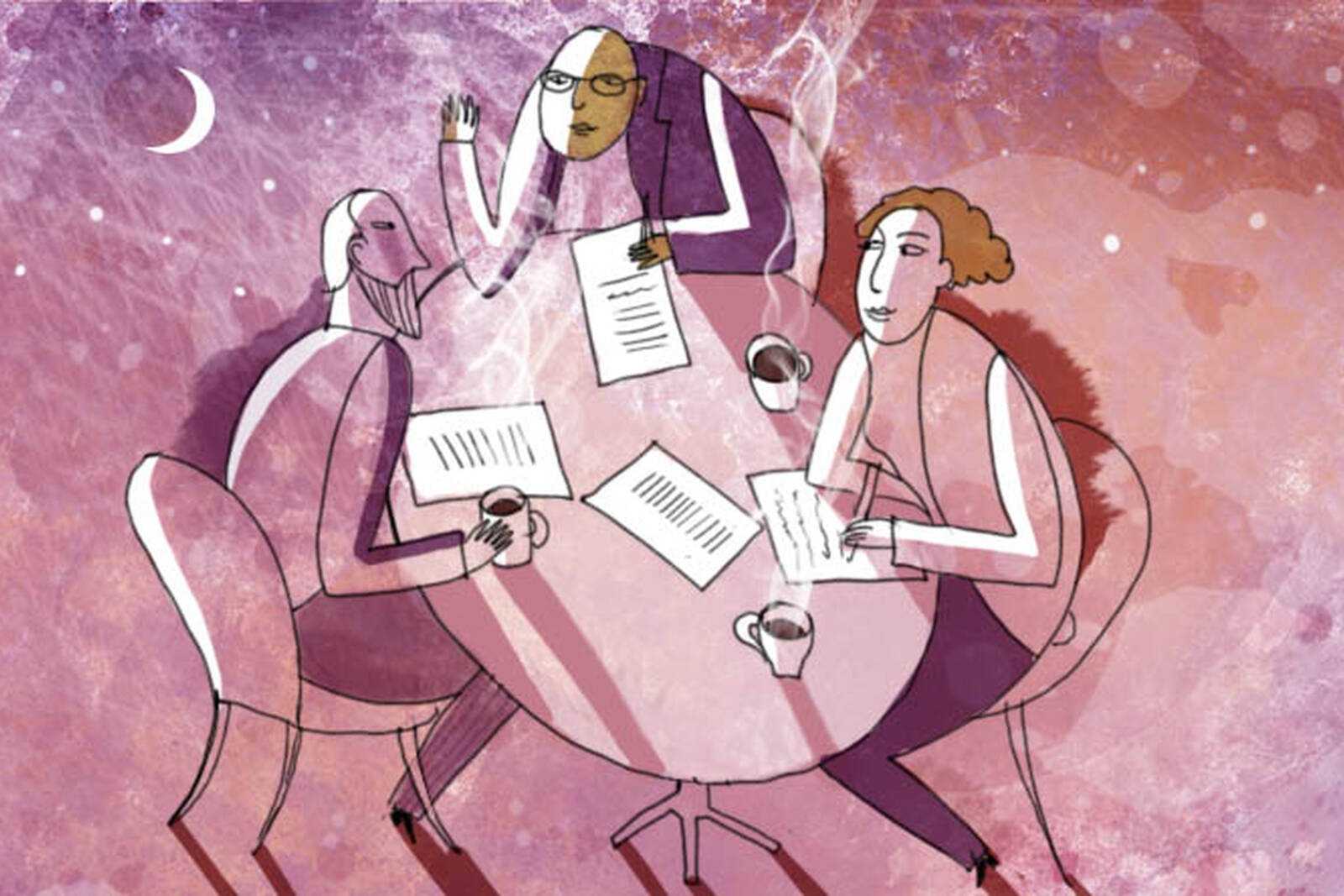Innovation Organizations Feb 3, 2017
Four Tips to Persuade Others Your Idea Is a Winner
Want to shake up the status quo? Use psychology to your advantage.

Lisa Röper
Sometimes the biggest and best ideas are the toughest to sell.
Human beings are hardwired to protect what is familiar, a concept psychologists often refer to as “status quo bias.”
“People just aren’t naturally oriented towards innovation or change,” says Loran Nordgren, an associate professor of management and organizations at the Kellogg School. “If you were dealing with totally rational agents, you could sell your innovation on the grounds of its functionality—in other words, why it’s a good idea. But you are almost never dealing with totally rational agents.”
Thankfully, if you are convinced that a certain new product, fresh strategy, or overseas expansion is exactly what your organization needs, there are things you can do to improve your chances of persuading key decision makers to go along with it.
Nordgren, who studies influence and decision-making, offers four guidelines for how to make your case more persuasively.
Let audiences know what they are missing. “People instinctively want to sell their idea based on the benefits,” Nordgren says. “They’ll emphasize all of the positives. They’ll list what the organization stands to gain.” But this is not always the best approach.
It is more effective, Nordgren says, to pitch the innovation instead as a potential opportunity lost. That’s because we feel the pain of loss more acutely than the pleasure of gain—a concept known as “loss aversion.” In fact, a number of studies indicate that, from investment decisions to coin tosses, we feel a loss twice as acutely as we feel a corresponding gain.
Nordgren says this concept applies to every kind of decision we make. For example, people are more likely to take a job opportunity abroad when they think about it not in terms of what they stand to gain—self-growth, exposure to new cultures and markets, travel experience—but in terms of what they stand to miss.
The same holds true for corporate strategy.
“When you’re trying to convince someone to expand into a new area or develop a new product, you want to use the same idea but present it differently,” Nordgren says. “‘Reputational enhancement’ doesn’t sound very interesting, but if you tell people that by not doing this, we miss out on an opportunity to appear really forward-looking, that is more likely to succeed.”
Give points of comparison. “We understand the world in relative terms,” Nordgren says. If presented with a chance to save $50 on a $300 purchase, we might seriously consider the offer. Statistically, though, we will find saving $50 on a $30,000 purchase less persuasive.
“Decisions aren’t made in a vacuum,” Nordgren says. “A fundamental mistake people make when trying to sell a new idea is forgetting to create points of comparison.”
“Decisions aren’t made in a vacuum. A fundamental mistake people make when trying to sell a new idea is forgetting to create points of comparison.”
This means it can be helpful to present your audience with more than one viable option—even if most of those are really just “decoy” options. For example, the most expensive dish on a restaurant menu is usually designed to direct one’s attention to the second-most expensive dish (which may just have the highest profit margin). Similarly, when The Economist magazine offers print, online, and online-and-print options, the print option is designed to make the online-and-print option appear more desirable.
“You want to present people with legitimate alternatives,” Nordgren says. “But the point, of course, is to draw most attention to the idea you want to pursue.”
Let people experience the benefits. Another psychological concept Nordgren cites is the “endowment effect.” Put simply, people value something more once it is in their possession. “If you want to convince someone of the value of your innovation, you might consider letting people experience the benefits,” he says.
One classic demonstration of the endowment effect involves coffee mugs. In one scenario, people were presented with a coffee mug and asked how much they would be willing to pay for it; in another scenario, they were given the mug and asked how much they would sell it for. On average, people offered to sell the mug for much more than they were willing to pay for it. The simple fact of the mug becoming theirs boosted its value.
The same principle can be applied to any new innovation, including products and services. Consider cable television. “HBO doesn’t try to sell you on the benefits of HBO,” Nordgren says. Instead of spending large sums of money trying to convince people to pay more for certain movie channels, they simply offer the channels for free for up to three months. “The decision to pay a certain amount for movie channels you are currently not enjoying is psychologically distinct from the decision to give up something that you have already enjoyed and experienced.”
Win over a critical mass. Often the most persuasive evidence for why someone should innovate comes from the behavior of the people around him. Psychologists call this “social proof.”
Social proof plays an important role in most group decisions. When a professor or administrator tells students that a certain course is limited due to widespread interest, those students are far more likely to sign up. Or consider the behavior of a savvy hotel piano player. Before sitting down to the keys for the evening, the piano player will seed her glass tip jar with five- and ten-dollar bills, in order to establish the desired norm.
“Social proof is particularly important when it comes to figuring out how to sell change within an organization,” Nordgren says. Indeed, studies have shown that what tends to move resistors is the fear that they might be left behind. “Early adopters might be keyed in to the functionality of an innovation, but if you can build critical mass, that’s the only thing that’s going to pull more conservative folks.”
Note that winning over a critical mass may not happen overnight. When selling an idea, Nordgren suggests patience is key. So instead of rushing immediately to the key stakeholder—the person who could kill the idea or help it materialize—Nordgren recommends securing easy wins along the way.
“First, try the idea out on people who are favorable,” he says. “You want to be able to go to the key stakeholder and say, ‘four of the five directors have approved this,’ or, ‘we’ve successfully tested an early version.’ You don’t really want to have that meeting until you have a clear sense of how your idea will be perceived.”



